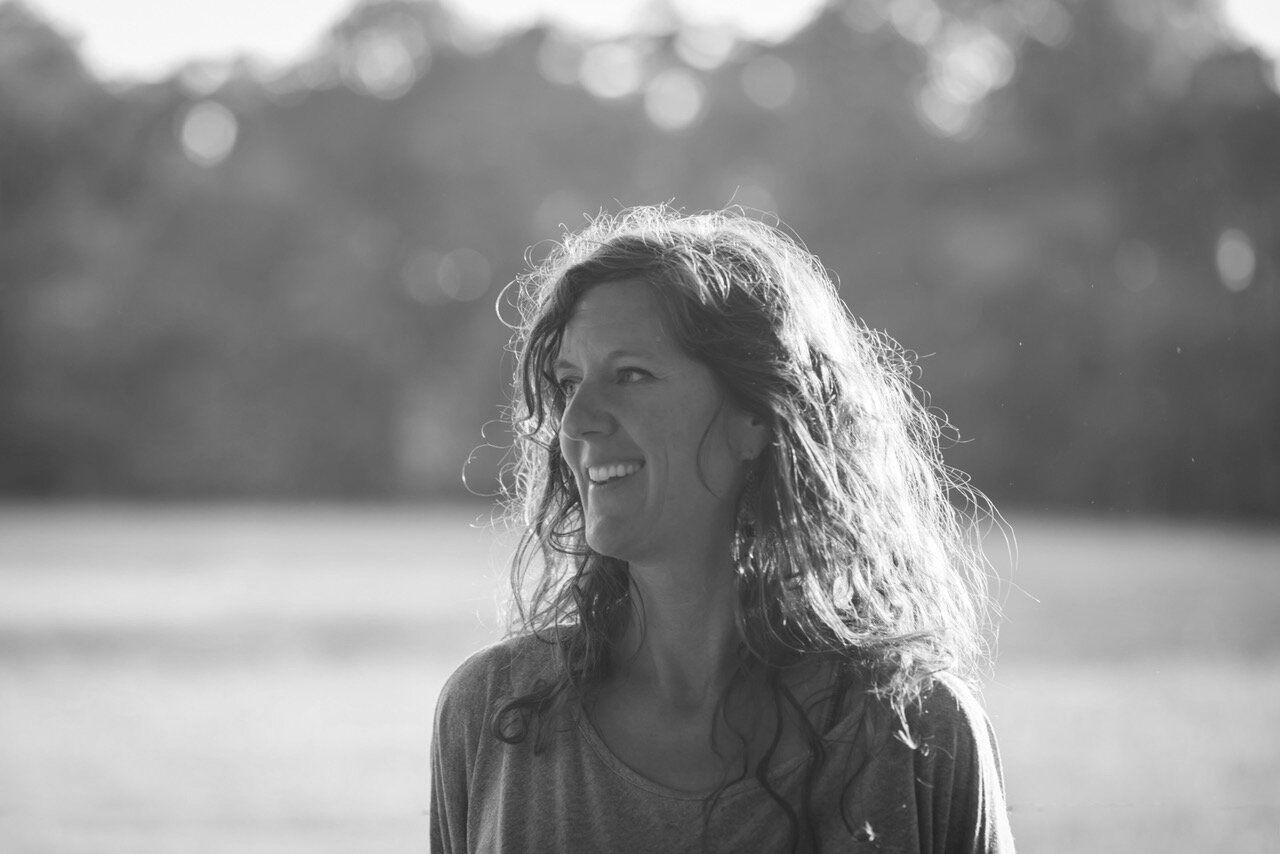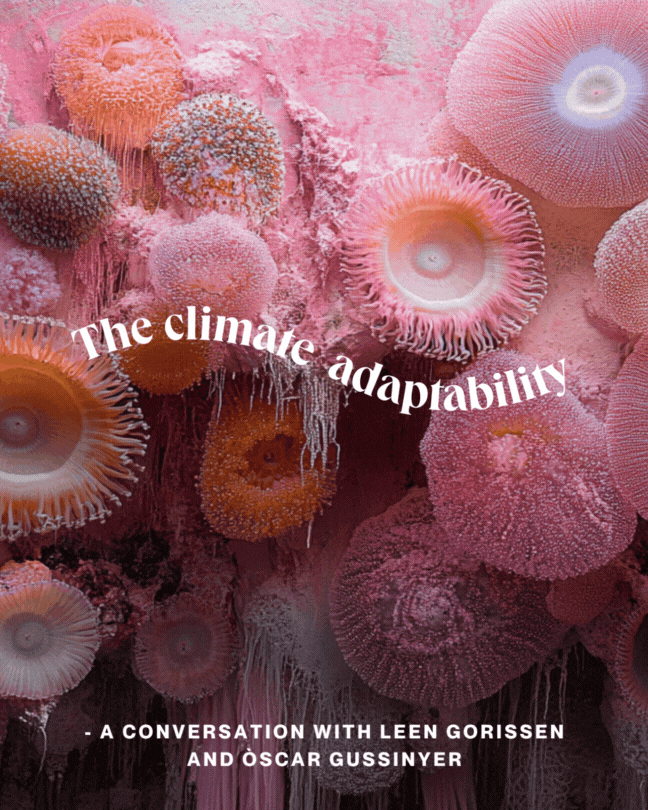Typology
Article
Scopes
Economy
The ability of corals to adapt to the changing conditions of their environment is a brilliant example of how nature can teach us to adapt in a flexible and resilient way to the challenges of human society, showing us the way to thrive in an increasingly complex and changing world.
Leen Gorissen is a prominent advocate of natural intelligence, an approach that seeks to learn from nature's "survival heroes". His work explores how strategies that have allowed living beings such as corals, trees or birds to survive for millennia can inspire solutions for human society. Gorissen applies this concept in the field of social organization and environmental management, with the aim of growing resilient communities in an increasingly complex and changing world.
In a recent interview from Balkar.Earth, Gorissen defined natural intelligence as "the art and science of survival and thrive on a planet that continually changes, with limited resources". This is reflected in the example that most often quotes to illustrate the power of nature: the adaptive capacity of corals.
" Natural intelligence to accelerate social innovation.
From Biomimetics to Social Biomimetics
Through his practical experience, Gorissen has applied the principles of biomimetics to social organizations and communities, with special emphasis on self-management and decentralized organization. In his interview, he spoke of how birds flying in coordinated formations show incredibly efficient behavior without a centralized leader. This is an important lesson: human communities, such as corals and birds, can act in an organized and effective way without a rigid hierarchy.
Gorissen applies this idea to the transformation of organizations. His vision challenges traditional leadership models, proposing a more horizontal organization, where creativity and adaptability are fundamental values. These principles are based on what she calls "organization in chaos", which is able to generate large transformations in a decentralized way, as nature does in many of its ecosystems.
Natural Intelligence and Social Regeneration
Social regeneration is another fundamental pillar in Gorissen's work. As society evolves, Gorissen warns that sustainability, despite being an important goal, is not sufficient. This is explained in his thinking about regeneration as a dynamic process that seeks not only to do things better, but also to change the fundamental value models. As she explained in the interview: "Instead of doing things better, we should ask ourselves: what can we do to transform what we do? How can we generate a deep change at the social and environmental level?"
An example that Gorissen highlighted in his interview is that of a care organization in the Netherlands, where the philosophy of "culture must lead, and structure must follow". This means that instead of following a bureaucratic and rigid model, the culture of the organization must be the main engine, with the structures adapting to the changing needs of the community and its surroundings. This model has been more effective, with patients who need less care and more satisfied workers, demonstrating that the change to a more regenerative and flexible system can be not only more effective, but also more profitable.
The Importance of Reconnecting with Nature
To Gorissen, connecting with nature is not just an exercise of ecological consciousness, but a fundamental tool for the evolution of human organizations. In his book "Natural Intelligence", Gorissen mentions that nature already knows what it works and offers us a model of sustainability and resilience that has exceeded evidence of millennia. As he said in the interview, learning from nature is not a matter of design techniques, but of mentalities and models of thought. For human communities, this means rethinking how we organize ourselves, how we share resources and how we address changes.
Natural intelligence, according to Gorissen, can transform our communities and organizations, making them more adaptive, resilient and regenerative. This practical application of biomimetics can provide valuable tools to address global challenges, from climate crisis to social inequality.
Learning the adaptive capacity of the coral
One of the most powerful examples that Gorissen uses to explain his conception of natural intelligence is choral. Coral reefs are extraordinary ecosystems that have adapted to drastic changes in temperature, salinity and other environmental conditions. The corals, like other living beings of nature, have survived thanks to their ability to adapt. This mechanism, based on a complex network of interactions, allows corals to remain alive and resilient despite the changing conditions of the environment.
Corals, through exceptional biological processes, have developed mechanisms that allow them to adapt to changing environmental conditions. One of the key elements of this adaptive capacity is its symbiotic relationship with some species of dinoflagellate algae, such as zooxanthellae. These algae live within the coral tissues and use sunlight to perform photosynthesis, generating energy that corals take advantage of. When environmental conditions change, such as when the water temperature rises above its optimum range, corals can "pel" these algae. This can cause the phenomenon of color scuring, known as coral bleaching. Although this phenomenon can be lethal if conditions do not improve, corals have the ability to recover under more favorable conditions, favoring new algae that can be better adapted to new conditions.
This adaptability is not only limited to environmental conditions, but also to its ability to create new forms of colonies and structures as the environment changes. The corals can modulate the growth of their colonies according to the availability of resources, which allows them to thrive in a changing and often difficult environment. In addition, the evolution of reproductive strategies that combine sexual and asexual reproduction also favors their ability to colonize new areas, especially when the original conditions deteriorate.
Gorissen uses this analogy to highlight the importance of flexibility and adaptability in human communities. Communities, such as corals, can develop networks of relationships and mechanisms that allow them to face social, economic and environmental changes in a more resilient way. Instead of resisting changes or trying to control them rigidly, communities can learn to respond to fluctuations in their environment, taking advantage of interconnections and resources dynamically and adaptively. Thus, the ability to adapt corals serves as a model of how human communities can evolve and thrive against the challenges of change, based on cooperation and interdependence to maintain their cohesion and resilience.
Application to human communities
Human communities can learn from corals by adapting to social, economic and environmental fluctuations through practices of flexibility, cooperation and interdependence. Specifically, they can follow several paths inspired by the way in which the choirs manage changes in their surroundings:
1. Flexibility to changes: As corals modify their symbiotic relationships to adapt to environmental changes, communities can adapt their practices and strategies based on changing conditions. This involves the ability to adjust policies, working methods and organizational structures to respond efficiently to social or economic challenges, such as a financial crisis, changes in legislation or a health emergency. Communities should be willing to review and adjust their strategies continuously, based on emerging needs.
2. Learning to cooperate and distribute resources: Chorales not only depend on their symbiosis with algae, but also manage their resources efficiently to ensure their survival. Human communities can follow this model by promoting shared and collaborative resource management, such as water, energy or basic services, so that each member of the community contributes to common sustainability. This includes encouraging collaboration between public, private and civil sectors to ensure equitable access to resources and a coordinated response to challenges.
3. Developing decentralized networks: Like corals can thrive through the creation of diversified and interconnected colonies, human communities can adopt decentralized organizational models where each local unit has autonomy to make decisions adapted to their specific needs. This decentralization allows a better response to changes and a greater capacity to recover against adverse situations, without losing the overall cohesion of the community. Through a more flexible and less hierarchical organization, communities can increase their resilience, as does a coral reef in the face of water heating.
4. Reproduction and regeneration through diversity: The corals reproduce sexually and asexually to ensure their survival. Similarly, human communities can use diversity as a tool for regeneration and innovation. This involves promoting cultural, neurodivergent, social and economic diversity, and giving rise to new ideas and solutions from this plurality. Regeneration not only refers to the restoration of the natural environment, but also to the reconstruction of social tissues by including all members of the community and the empowerment of vulnerable or marginal groups.
5. Adaptation to climate change: How corals change their symbiosis to resist global warming, human communities can adapt to climate crisis by using natural solutions based on local adaptation, conservation of natural ecosystems and the creation of green infrastructure. Instead of resisting climate change, communities can work with nature to build more sustainable and resilient solutions, as corals have adapted to meet changing sea conditions.
In short, human communities can learn from the flexibility and adaptation of corals by developing models of cooperation, decentralization and regeneration that promote constant adaptation to changes in the social, economic and environmental context, while maintaining cohesion and resilience to global challenges.

Conclusion
The resilience of the choirs teaches us that, instead of resisting change, we must learn to adapt, taking advantage of cooperation, diversity and flexibility to evolve and thrive in an increasingly changing world.
The resilience and adaptation of the chorales offers a deep and essential lesson for the future of our communities. In a world marked by uncertainty and accelerated change, the path to sustainability and prosperity is not in resistance to change, but in the ability to adapt in a flexible and intelligent way, as natural ecosystems do. The choirs, with their ability to adjust to changing conditions, show how interdependence, cooperation and regeneration can be the pillars of a society that not only survives, but grows and evolves before adversity.
If human communities follow the example of corals, they can cultivate organizational structures based on decentralization, self-management and flexibility, which encourage diversity and interconnection. This will not only make them more resilient to social, economic and environmental fluctuations, but also promote a new regeneration culture that involves transforming value models to create truly sustainable systems.
This view of an adaptive future, inspired by nature, is hope for human society. Natural intelligence, as presented by Leen Gorissen, offers us a model of the future in which the capacity of change and evolution, such as the corals, becomes the key to facing global challenges. If we know how to learn from nature, we can establish new bases to build a fairer, more equitable and more resilient world for future generations.
This application of bioregionalization increases territorial resilience, allowing the territory to regenerate through its own dynamics. The more we understand the interrelationships of the site, the more capacity we have to face global and local challenges, creating long-term solutions and helping communities to thrive.
In short, bioregionalization is a process of identifying active patterns and regeneration, which allows us to take advantage of the inherent potential of sites. This not only helps to face immediate challenges, but also opens the way to a more adaptive and resilient future. Crisis become opportunities for evolution and prosperity.


